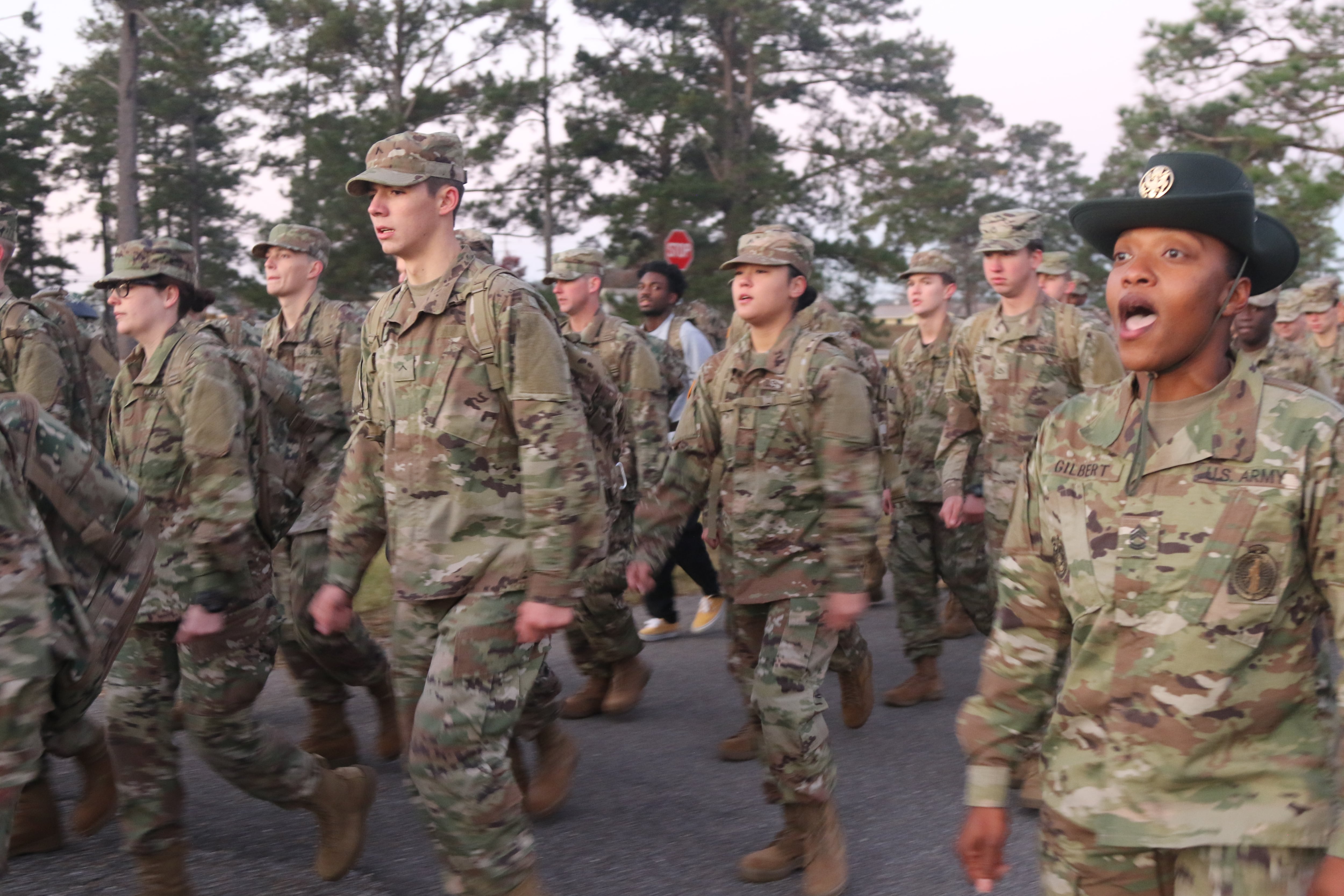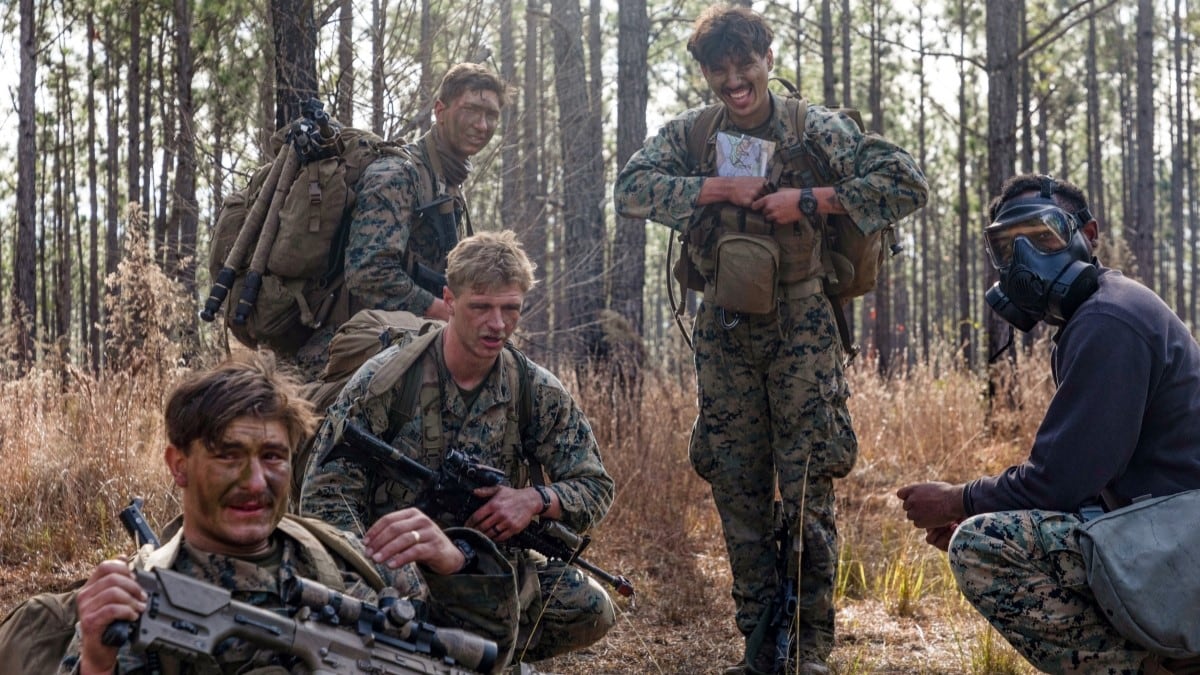When it comes to military job retention rates, not all specialties are created equal. A Marine in an administrative or logistics role, for example, may see a lot less turnover in their specialty than a rifleman or aircraft maintainer.
New data from all the military services reveals the lowest-retention jobs for each of the services, highlighting a variety of challenges the services face, from competitive pay to effective career progression.
And while retention remains strong across the services even as recruiting falters, personnel officials say they’re working hard to prevent future skill gaps that could affect military readiness.
At a quarterly meeting of the Defense Department-chartered Defense Advisory Committee on Women in the Services last month, representatives of each of the military services revealed which jobs had the lowest retention rates for each of the genders and discussed what they were doing to promote equity and retain military talent.
The Marine Corps presented much less detailed information than the other services in response to the committee’s request.
RELATED

But it did highlight the significant difference between first and second-term enlisted retention, averaging just 30% for the first contract and 45% for the second, and annual officer continuation rates, which were 89% in the past fiscal year.
Among already low enlisted retention rates, the 0311 rifleman community stood out, retaining only 16% of reenlistment-eligible Marines in fiscal 2023 in keeping with the needs of the Corps, said Maj. Mark McGee, an enlisted retention planner with Manpower Plans and Policy.
For enlisted women, he said, aviation maintainer roles, in addition to infantry, had the lowest retention rates.
On the officer side, where the Marine Corps does not have specific retention targets, KC-130 aircraft commander was the job with the lowest continuation rate, averaging 85% for men and women.
For the Navy, many of the highest-turnover jobs were in the nuclear field. Continuation rates in fiscal 2023 for all ratings averaged close to 86% for enlisted troops and 91% for officers, with minimal difference between the genders.
For both men and women, the enlisted roles of electronics technician-nuclear-surface and electrician’s mate-nuclear-surface were among the highest-turnover jobs, with an average of 83.5% retention over five years for the former and 85% for the latter.
Aviation boatswain’s mate and aviation boatswain’s mate, fuels – both jobs involving flight deck aircraft management – also ranked in the bottom ten jobs for both genders in retention.
Capt. Michael Wheeler, the Navy’s director of comprehensive analytics, acknowledged that the military’s inability to compete with civilian pay for certain positions played a role in the retention picture.
“Nuclear-trained personnel, we are paying them at the statutory congressional limit of what we can pay,” Wheeler said. “The sailors are very highly talented and have a lot of opportunities on the outside. Despite us paying them as much as we conceivably can, they still tend to walk.”
Regarding the flight deck roles, Wheeler said that 70% of the sailors serving in those jobs were in the enlisted ranks of E-5 and below, reflecting the physically demanding nature of the work.
“We just do not intend to keep those sailors long-term, at least not in that rating,” he said.
In the Air Force, where average enlisted and officer retention rates hover around 90%, medical jobs see some of the highest turnover. Optometry specialist for enlisted women, nurse for female officers, and aerospace medicine physician for male officers all made the list of lowest-retention jobs, in addition to flight engineer for enlisted men. But retention remained relatively high in those communities, ranging from 79% to 84%.
Some of the communities with low retention rates are very small, said Col. Joshua Hawkins, chief of the Air Force’s Military Policy Division. Hawkins also noted that some of these jobs, like nursing and optometry, had a disproportionately high ratio of women to men, which may affect overall retention.
Acknowledging that retention rates for women dipped at the E-5 and E-9 level more dramatically than for men at the same ranks, Hawkins said Air Force analysis indicates limitations in upward job mobility and alternative career decisions may factor into these trends.
The Air Force’s predictive analytics do show the service experiencing personnel gaps around 2027 and 2028 among noncommissioned officers and experienced company-grade officers. Hawkins said the Air Force was making promotion-focused moves – including an “up or out” rule change announced in December – to make sure critical jobs stayed filled.
“We’re working on proactive measures right now,” Hawkins said. “We don’t want to over-advance people before they’ve got the experience. But we’re actively thinking about that right now, how to counteract it.”
In the Army, the lowest-retention job specialties for men were Criminal Investigation Division special agent, with a retention rate of 38% for fiscal 2023; diagnostic equipment maintenance specialist, with a retention rate of 44%; and cable systems installer-maintainer, at 48%.
For women soldiers, the lowest-retention jobs included carpentry and masonry specialist, at 23% retention; diagnostic equipment maintenance specialist at 25%; and unmanned aircraft repairer, at 33%.
This contrasts with an overall Army retention rate of 80.4% for women and 77.7% for men in fiscal 2023.
For the Army, it’s not fully clear why certain jobs struggle to retain soldiers. Sgt. Maj. Tobey Whitney, the Army’s senior career counselor, told the committee that some of the data aligned with planning: CID is significantly reducing its active-duty ranks as part of a planned restructuring and thus actively transitioning many of its soldiers elsewhere.
Why so many maintenance specialties can’t hang on to troops is less clear.
“We have requested information from the respective components and we’re awaiting their feedback,” Whitney said.
RELATED

Avery Calkins, an associate economist at the RAND Corporation, noted that in the medical fields, as in aviation specialties and nuclear technician roles, competition and demand in the civilian workforce may be putting pressure on the military to keep top talent.
Retention and recruiting combine together to make up the strength of a military force, she told Military Times, and with the Air Force, Navy and Army missing fiscal 2023 recruiting goals and a declining proportion of prospective recruits scoring in the top 50% on the Armed Services Vocational Aptitude Battery, or ASVAB, retention is all the more critical to keeping skilled jobs filled.
While there aren’t clear indicators of a burgeoning retention crisis yet, she said, it’s something the military should monitor closely.
“The concern with recruiting is that in five years, we won’t have enough sergeants or E-5s in service,” Calkins said. “If retention were to fall right now, then not only would there not be enough E-5s in five years, there might not be enough E-5s this year.”
Personnel officials who appeared before the group did address what appeared to be an early trend: the Marine Corps, Army, Air Force and Navy all showed retention rates in fiscal 2023 that remained below the fiscal 2019 pre-pandemic levels.
Officials with the Army and Navy said their retention rates were falling back into historical norms following pandemic-era highs, when economic uncertainty prompted many troops to stay put rather than seek out other opportunities. In both services, though, the trends are being scrutinized, officials said.
The Army, said Whitney, is currently developing a new, simple retention survey, in addition to its existing career engagement survey, that will focus on junior soldiers who will soon be making decisions about whether to hang up their uniform.
“It will be a simple five to seven-question survey that provides us near real-time feedback on the sentiments of soldiers by the location they’re currently serving in,” he said. “I’m looking forward to the new survey, which will allow us to get important feedback from the younger soldiers.”
Hope Hodge Seck is an award-winning investigative and enterprise reporter covering the U.S. military and national defense. The former managing editor of Military.com, her work has also appeared in the Washington Post, Politico Magazine, USA Today and Popular Mechanics.





